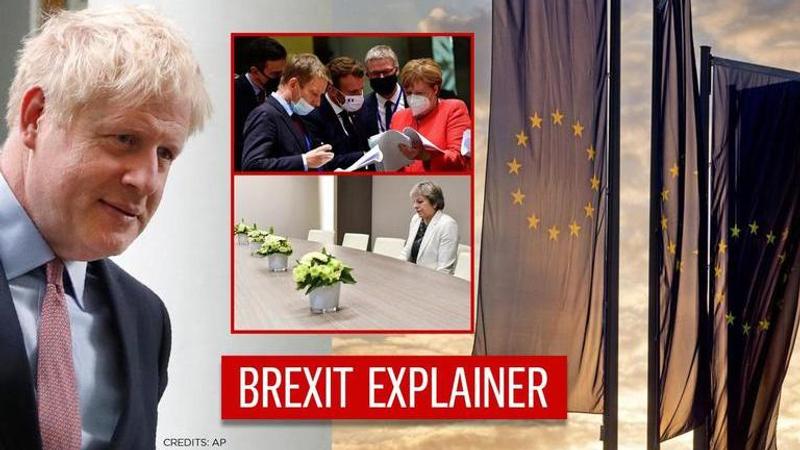Published 13:11 IST, December 25th 2020
Brexit deal explained: What is included in UK-EU trade agreement as Britain takes control?
After nine months of tiresome negotiations, the UK and the EU have finally signed the Brexit deal on December 24 just a weak before transition deadline.

After nine months of tiresome negotiations, the UK and the European Union have finally signed the Brexit deal on December 24 just a weak before Britain finally leaves the 27-nation-bloc on December 31 with the end of the 11-month transition period. Since the Brexit talks about dominated the UK politics throughout the year amid the COVID-19, the ‘British exit’ from the EU 48 years after it joined the European Economic community is finally done and dusted.
Britain had officially left the European Union on January 31 at 11:00 PM (2300 GMT) after joining the bloc in 1973 with the flag of the United Kingdom - the Union Jack - was taken down from the European Council building Brussels. After which, it had entered into a transition period with the bloc until December 31, 2020, with an aim to strike an agreement defining the post-Brexit relationship between the UK and the EU. While the negotiations suffered many blows including the pandemic and other deciding factors, a Brexit deal was finally secured at 1:44 GMT on Christmas Eve.
What is in the Brexit deal?
As per the summary published on the UK government website of the UK-EU Trade and Cooperation Agreement’s summary, both sides have agreed to “unprecedented 100% tariff liberalisation”. This means that all tariffs have been scrapped along with quotas on the movement of goods produced by Britain and the union. This is also the “first time” that the 27-nation-bloc has agreed to a ‘zero tariff zero quota deal’ with any other trading partner, starting from January 1, 2021.
The Brexit deal also includes the provisions to support the trade in services providing UK with service suppliers with legal guarantees that will not face any disruptions to trade while selling into the union along with supporting British professionals who will continue their business across Europe.
The UK gov summary also said, “The Agreement firmly and explicitly recognises UK sovereignty over our fishing waters and puts us in a position to rebuild our fishing fleet and increase quotas in the next few years, finally overturning the inequity that British fishermen have faced for over our decades.”
Apart from cooperation in trade that is roughly half of the $900 billion of annual EU-UK commerce, both sides have also ensured “streamlined co-operation on law enforcement” in order to tackle crime as well as terrorism. The summary evidently states that the entire deal is based on international law and not the EU law. It added, “There is no role for the European Court of Justice and no requirements for the UK to continue following EU law.”
The agreement was agreed on top of the formal Withdrawal Agreement which was reached in 2019 and the UK and EU decided to divide the fishing quotas, which was also one of the most crucial elements of the negotiations.
However, the post-Brexit deal between UK-EU have included the backbone of British exports, that are financial and business services, only to a limited extent. Even cooperation on foreign policy, security and defence, transport, energy and civil nuclear cooperations will also be less than what the UK experienced in the union.
Updated 13:09 IST, December 25th 2020




